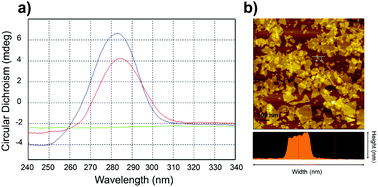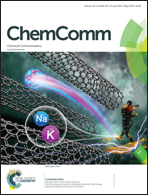Mercury nanoladders: a new method for DNA amplification, signal identification and their application in the detection of Hg(ii) ions†
Abstract
A biosensor based on Hg(II) nanoladders integrated with graphene oxide (GO) for Hg(II) detection was developed. Nanoladders were essentially DNA sandwich structures supported by T–Hg(II)–T and were used for Hg(II) trapping and signal translation. GO was used to differentiate the fluorescence generated by Hg(II) nanoladders from a background signal.



 Please wait while we load your content...
Please wait while we load your content...